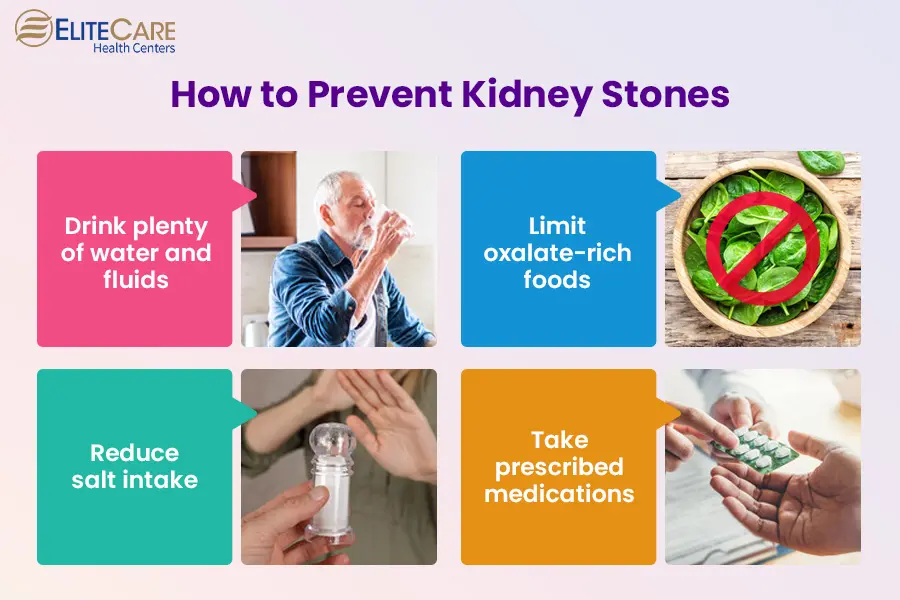How to Differentiate Between Kidney Stones vs UTI: Key Factors and Diagnostic Tips
How to Differentiate Between Kidney Stones vs UTI: Key Factors and Diagnostic Tips
Blog Article
A Comparative Study of the Risk Factors and Prevention Strategies for Kidney Stones and Urinary System System Infections: Insights for Better Wellness
The raising prevalence of kidney stones and urinary system system infections (UTIs) requires a better evaluation of their interrelated risk factors and prevention strategies. Both problems, often affected by way of living options such as weight, diet regimen, and hydration administration, highlight an important crossway in health promo. By recognizing and attending to these shared vulnerabilities, we can develop extra efficient methods to mitigate the threats related to each. What implications might these understandings have for public health and wellness initiatives and individual health and wellness management? The solution might reshape our understanding of preventative treatment.
Introduction of Kidney stones
Kidney stones are a common urological problem, affecting around 10% of individuals at some time in their lives. These strong mineral and salt deposits create in the kidneys when urine ends up being focused, allowing minerals to take shape and bind with each other. The structure of kidney stones differs, with calcium oxalate stones being one of the most widespread, followed by uric acid, struvite, and cystine stones.
Threat elements for the advancement of kidney stones include dehydration, dietary routines, obesity, and certain clinical problems such as hyperparathyroidism or metabolic disorders. Signs of kidney stones can vary from light discomfort to serious discomfort, usually presenting as flank pain, hematuria, and urinary system necessity.

Recognizing Urinary System System Infections
Urinary system tract infections (UTIs) represent a common clinical problem, especially amongst women, with roughly 50-60% experiencing a minimum of one UTI in their lifetime - Kidney Stones vs UTI. UTIs occur when bacteria get in the urinary tract, leading to inflammation and infection. This problem can influence any type of part of the urinary system, consisting of the kidneys, ureters, bladder, and urethra, with the bladder being one of the most frequently impacted site
The clinical discussion of UTIs generally consists of signs such as dysuria, increased urinary system regularity, seriousness, and suprapubic discomfort. In some situations, patients might experience systemic symptoms such as high temperature and chills, showing a more extreme infection, potentially entailing the kidneys. Diagnosis is mostly based on the existence of symptoms, affirmed by urinalysis and urine society to identify the causative microorganisms.
Escherichia coli is the most typical virus related to UTIs, representing approximately 80-90% of situations. Threat factors include physiological proneness, sexual activity, and particular clinical conditions, such as diabetic issues. Understanding the pathophysiology, medical symptoms, and analysis criteria of UTIs is important for reliable monitoring and prevention methods in at risk populations.
Shared Risk Aspects
Numerous common risk elements add to the growth of both kidney stones and urinary system tract infections (UTIs), highlighting the interconnectedness of these two conditions. Dehydration is a famous threat factor; inadequate fluid intake can cause focused pee, promoting the formation of kidney stones and creating a positive environment for bacterial development, which can speed up UTIs.

Changes in estrogen degrees can affect urinary system tract wellness and stone development. Additionally, excessive weight has been recognized as a common threat element, where excess weight can lead to metabolic adjustments that favor both kidney stone development and urinary system infections.
Prevention Approaches
Understanding the common threat elements for kidney stones and urinary system tract infections emphasizes the importance of carrying out effective prevention approaches. Central to these techniques is the promo of ample hydration, as sufficient liquid consumption waters down pee, reducing the concentration of stone-forming materials and minimizing the danger of infection. Medical care professionals typically advise alcohol consumption at the very least 2 to 3 litres of water daily, customized to individual needs.
Additionally, nutritional modifications play an important duty. A well balanced diet low in sodium, oxalates, and animal healthy proteins can alleviate the development of kidney stones, while increasing the usage of vegetables and fruits supports urinary tract health and wellness. Routine surveillance of urinary system pH and make-up can additionally assist in identifying predispositions to stone formation or infections.
Additionally, maintaining proper hygiene practices is important, especially in ladies, to stop urinary tract infections. This includes wiping from front to back and urinating after sexual intercourse. Lastly, for people with recurrent issues, prophylactic treatments or medications might be essential, led by medical care specialists, to resolve certain danger aspects successfully. On the whole, these avoidance techniques are important for reducing the occurrence of both kidney stones and urinary system system infections.
Way Of Living Modifications for Wellness
Exactly how can lifestyle alterations add to far better general wellness? Carrying out specific way of life changes can dramatically decrease the threat of developing kidney stones and urinary tract infections (UTIs) A well balanced diet plays a critical function; raising fluid intake, specifically water, can dilute pee and aid avoid stone development as well as eliminate microorganisms that may cause UTIs. Eating a diet rich in vegetables and fruits provides necessary nutrients while decreasing sodium and oxalate intake, which are connected to stone growth.
Normal physical activity is also vital, as it promotes overall health and aids in maintaining a healthy weight, further decreasing the risk of metabolic disorders associated with kidney stones. Additionally, practicing excellent health is crucial in preventing UTIs, particularly in females, where cleaning strategies and post-coital peeing can play precautionary functions.
Preventing excessive caffeine and alcohol, both of which can aggravate dehydration, is try this web-site suggested. Regular clinical exams can assist monitor kidney feature and urinary system health and wellness, identifying any kind of early signs of problems. By embracing these lifestyle alterations, individuals can enhance their total wellness while effectively lowering the danger of kidney stones and urinary system tract infections.
Verdict
Finally, the comparative evaluation of kidney stones and urinary system tract infections emphasizes the relevance of shared danger factors such as dehydration, nutritional practices, and obesity. Carrying out effective avoidance strategies that concentrate on sufficient hydration, a well balanced diet, and normal exercise can minimize the occurrence of both conditions. By resolving these common factors through way of life modifications and enhanced health methods, people can enhance their general health and decrease their susceptability to these prevalent health and wellness concerns.
The enhancing frequency of kidney stones and urinary system infections (UTIs) requires a more detailed examination of their related danger elements and prevention strategies - Kidney Stones vs UTI. The composition of kidney stones differs, with calcium oxalate stones being the most widespread, followed by uric acid, struvite, and cystine stones
Treatment alternatives differ based on the size and type of the stone, varying from traditional management with enhanced liquid consumption to medical intervention like lithotripsy or surgical elimination for bigger stones. i loved this In addition, obesity has been determined as a typical threat variable, where excess weight can lead to metabolic adjustments that favor both kidney stone development and here urinary tract infections.Understanding the shared risk elements for kidney stones and urinary tract infections highlights the significance of carrying out reliable avoidance approaches.
Report this page